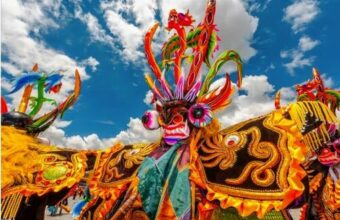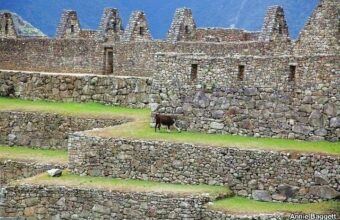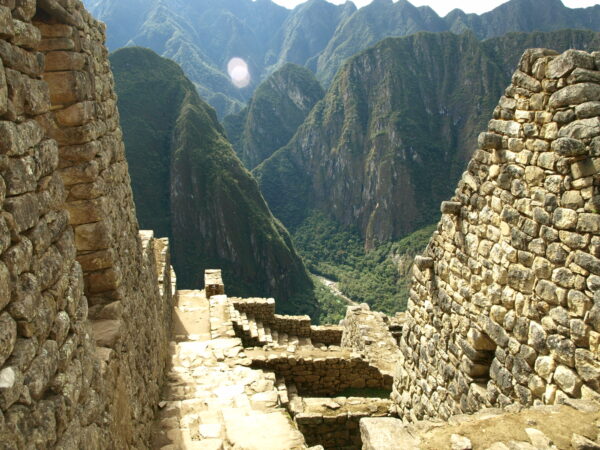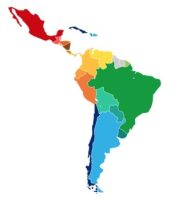How to get to Machu Picchu
An essential guide to visiting Peru's most famous ruins
Visiting Machu Picchu: overview
The 800lb gorilla of Peru's historical sites, most visitors to the country are here primarily to visit Machu Picchu. There are only two official ways to get to Machu Picchu:
- Most people get here on the train from Cusco to Aguas Calientes ("Machu Picchu pueblo"), where you'll stay overnight and take a guided tour around the ruins.
- Alternatively you can hike to Machu Picchu on the Inca Trail.
In my opinion, the typical itinerary offered by most tour operators can feel a little frenetic and anti-climatic. Whenever I'm at Machu Picchu I see visitors racing around on a two-hour tour of the ruins before they rush off for the train back to Cusco. In my view this does a complete disservice to both the site and the visitors alike.
Fortunately I've found a few simple ways to tweak the itinerary and make it a much more pleasant, relaxed experience.
Read on for my essential guide to visiting Machu Picchu.
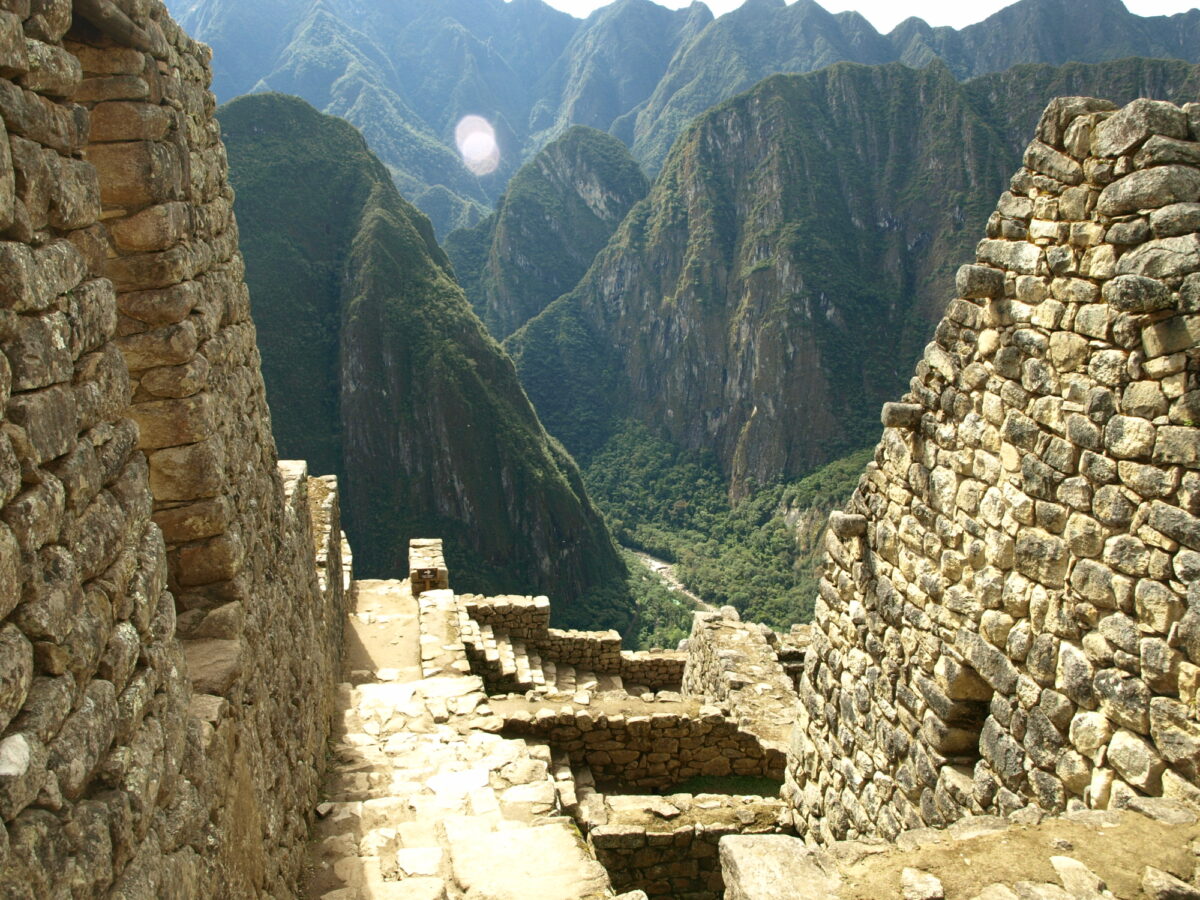
Afternoon sun shining through the world-famous ruins
The best way to visit Machu Picchu
An essential guide to visiting Peru's most famous ruins
By far the most common route to Machu Picchu is via train from Cusco or Ollantaytambo in the Sacred Valley to Aguas Calientes, followed by a bus connection up to the ruins’ entrance.
Aguas Calientes is a small tourist town that exists purely as a staging post to reach Machu Picchu. Recent efforts to brand it “Machu Picchu Pueblo” haven’t taken off, and can be confusing since the Peruvian government website sells Machu Picchu tickets for “Llaqta de Machu Picchu”. The Quechua word llaqta and the Spanish word pueblo both mean town.
There is no road to Aguas Calientes; the only way to reach the town is by train or walking. Any tours that claim to drive you to Aguas Calientes will take you to nearby Santa Teresa, from where you take the train at the hydroelectric station to Aguas Calientes.
The standard Machu Picchu itinerary
The typical Machu Picchu itinerary arrives at Aguas Calientes by train early in the morning, connects to the bus and heads straight up to the ruins. Visitors get a two hour tour of the ruins, then complete the return bus and train journey to Cusco in the evening.
In my opinion this is a rushed, gruelling itinerary and it can all feel a bit anticlimactic. Racing around one of the world’s most famous historical sites does a deep disservice to both yourself and your Peruvian hosts. The train is owned by an international corporation but most restaurants and small hotels are owned by locals; by spending a night in Aguas Calientes, you both support the local economy and have the opportunity to visit Machu Picchu first thing in the morning.
If you're short on time I recommend a slightly more relaxed itinerary that arrives at Aguas Calientes in the afternoon or evening, you can spend the night in the town, then catch an early bus to the ruins early the next morning. The earliest tickets are for 6am, when the ruins are at their least crowded and you have a chance of seeing the spectacular sunrise on Machu Picchu, depending on the weather.
The best way to visit Machu Picchu
But if cramming it all into a day trip sounds unsatisfying, my best advice is to turn it into a two-day visit: arrive at Aguas Calientes in the late morning, have lunch in town and take the bus up to the ruins for the last entry time at 2-3pm. You can stay until the site closes and you’ll get to see the beautiful late afternoon light on the ruins when most of the crowd has left. Spend the night in town, then, visit again early the next morning and do one of the extra day hikes.
If you want this double experience, buy your tickets as far in advance as possible and make sure that you understand the five circuits that restrict which areas of the ruins you can visit. If you choose to do an extra hike in the morning, you will be limited to one specific circuit. See the section on Machu Picchu Circuits below.
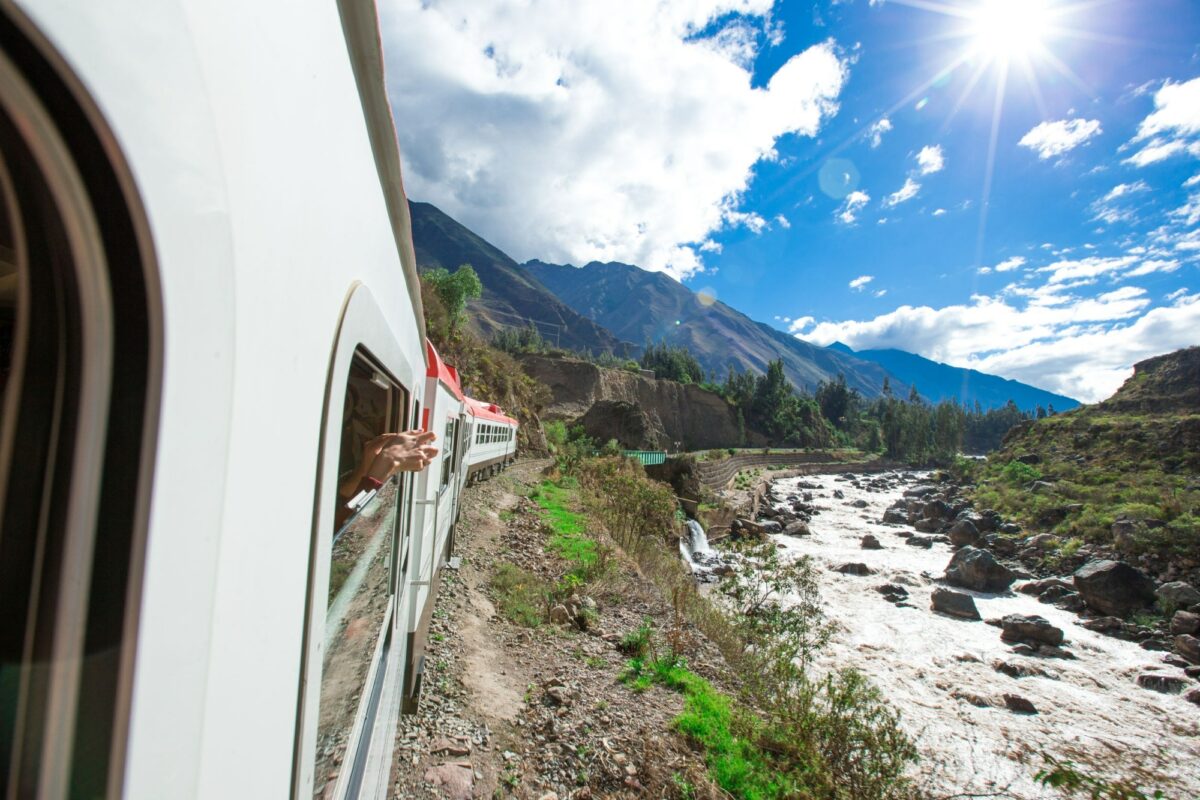
Train journey along the Urubamba River towards Machu Picchu
How to visit Machu Picchu by train
There are two rail companies with services to Aguas Calientes: Inca Rail and Peru Rail. Each has a variety of classes, ranging from the standard-class Voyager (Inca Rail) and Expedition (Peru Rail) up to the ultra luxury Belmond Hiram Bingham service, which is sold by Peru Rail. In between is the midrange Vistadome class, featuring oversized panoramic windows for great views of the mountains and the thundering Urubamba River.
Peru Rail runs more departures and operates each class of train on entirely separate services, whereas Inca Rail runs the different class carriages on the same service.
Confusingly, each company operates from their own separate train stations in Cusco: Peru Rail services run from Poroy station just outside of Cusco (bus transfers are included from Cusco to Poroy). Inca Rail trains run from San Pedro station in Central Cusco. They both run from the same station in Ollantaytambo, which is where most people catch the train. The luxurious Tambo del Inca hotel in Urubamba has its own exclusive train station for Peru Rail service to Ollantaytambo and on to Aguas Calientes.
Prices for these trains are exorbitantly high because the two companies are owned by the same parent company and only appear to be in competition. In reality, it is a monopoly that fixes prices accordingly.
Machu Picchu train times:
Cusco (San Pedro) – Aguas Calientes (Inca Rail): 4.5 hours
Cusco (Poroy) – Aguas Calientes (Peru Rail): 3.5 hours (including transfer to Poroy station)
Urubamba (Tambo del Inka) - Aguas Calientes (Peru Rail): 2.5 hours
Ollantaytambo - Aguas Calientes (Peru Rail & Inca Rail): 1.5 hours
Be prepared for a mad rush on arrival at Aguas Calientes. If you’re doing the whistle stop itinerary and heading directly for the ruins you’ll leave the train station and walk a few blocks to the bus which takes you up to the main entrance.
Question
How much do the trains to Machu Picchu cost?
Answer
There are two train services from Cusco to Aguas Calientes (Machu Picchu), PeruRail and IncaRail. They each offer different classes of train services: PeruRail has three classes of train and IncaRail has five.
The lower class, called Expedition for PeruRail and Voyager for IncaRail, is still very nice and costs $55-$70 each way. If you want to splurge, check out the other classes of train but keep in mind that the ride is only about two hours each way from Ollantaytambo.
Prices for each service vary by time of year and time of day. (Like airlines, they have lower prices during times of day that fewer people want to travel.) During the off season, from October through March, prices tend to be about $10 USD cheaper each way.
You can see the exact prices for your travel dates on the PeruRail and IncaRail websites.
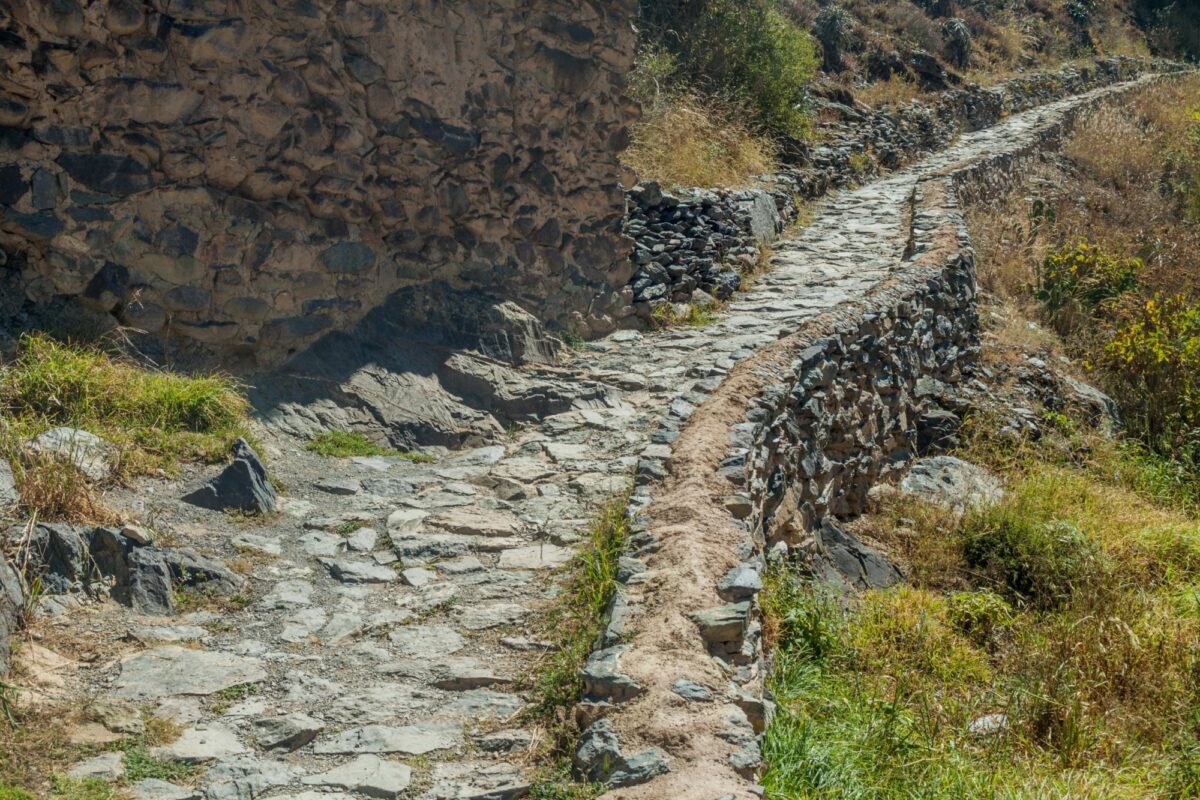
Original Inca stonework on the Inca Trail
How to get to Machu Picchu by foot
The only other official way to get to Machu Picchu is by hiking there. You can arrive on either the full four-day Inca Trail trek, or the “two-day” KM104 trek (which is technically one day of trekking). These hikes are the only possible way of entering the ruins by foot via Inti Punku, the Sun Gate, an experience that accounts for much of the Inca Trail’s allure.
The 43 km four-day trek arrives at the Sun Gate for sunrise on the fourth day, giving you a glimpse of the still crowd-free ruins. It’s another half hour from Inti Punku down to Machu Picchu, so expect there to already be others touring the ruins by the time you get there.
For the shorter KM104 trek, the train from Cusco to Aguas Calientes stops at the KM 104 trailhead where hikers jump off to join the final 12 kilometres of the main Inca Trail route. It’s roughly six to seven hours of hiking and has a lot of uphill sections, but is a good option for groups with younger or older travellers who don’t fancy the full four-day trek.
A little-publicised benefit to the KM104 trek is that you arrive at Machu Picchu in the afternoon, as the crowds are beginning to thin out. You are not allowed to enter the ruins, but you have a great view of them from the Sun Gate (Intipunku) and can stop to take photos on some of the upper terraces. Even better, you return the next morning for a full guided tour.
Some tour agencies now offer the KM104 trail and Machu Picchu tour on the same day. If you want to do this, be sure you are prepared for a swift hike because you’ll need to get to Machu Picchu by 2:00pm to enter the ruins for the tour.
Unofficial and DIY routes to Machu Picchu
Outside of these official routes, there are a few backpacker hacks and DIY routes that have been publicised. A well-known public transport route is by bus from Cusco to the town of Santa María (services to Quillabamba stop here), then by colectivo taxi to Hidroeléctrica via Santa Teresa. From here it’s 10 km to Aguas Calientes. You may be able to catch the train departing from Hidroeléctrica or walk along the train tracks. Note: there are only a couple daily trains but this is an active railway passing several short tunnels and a bridge. Attempt this at your own risk. Since 2022, the government has attempted to prevent people from walking the tracks but this is an ongoing issue.
Some bloggers have written about simply hiking the train tracks from Ollantaytambo all the way to Aguas Calientes. This used to be relatively easy but the local government put a stop to it in 2022. Even if you make it on the tracks, you’d be dodging angry security guards, semi-feral dogs, and, more importantly, trains on an active railway.
The ultra hardcore even shun the final shuttle bus and instead choose to walk from Aguas Calientes to Machu Picchu. It’s nine kilometres from town, most of that is a steep climb and you’ll arrive exhausted. If you’d like the walk, buy a bus ticket for the ascent and then walk back down to town after you visit the ruins. You’ll go through a forest with lots of bird watching and part of the trail has Inca stairs.
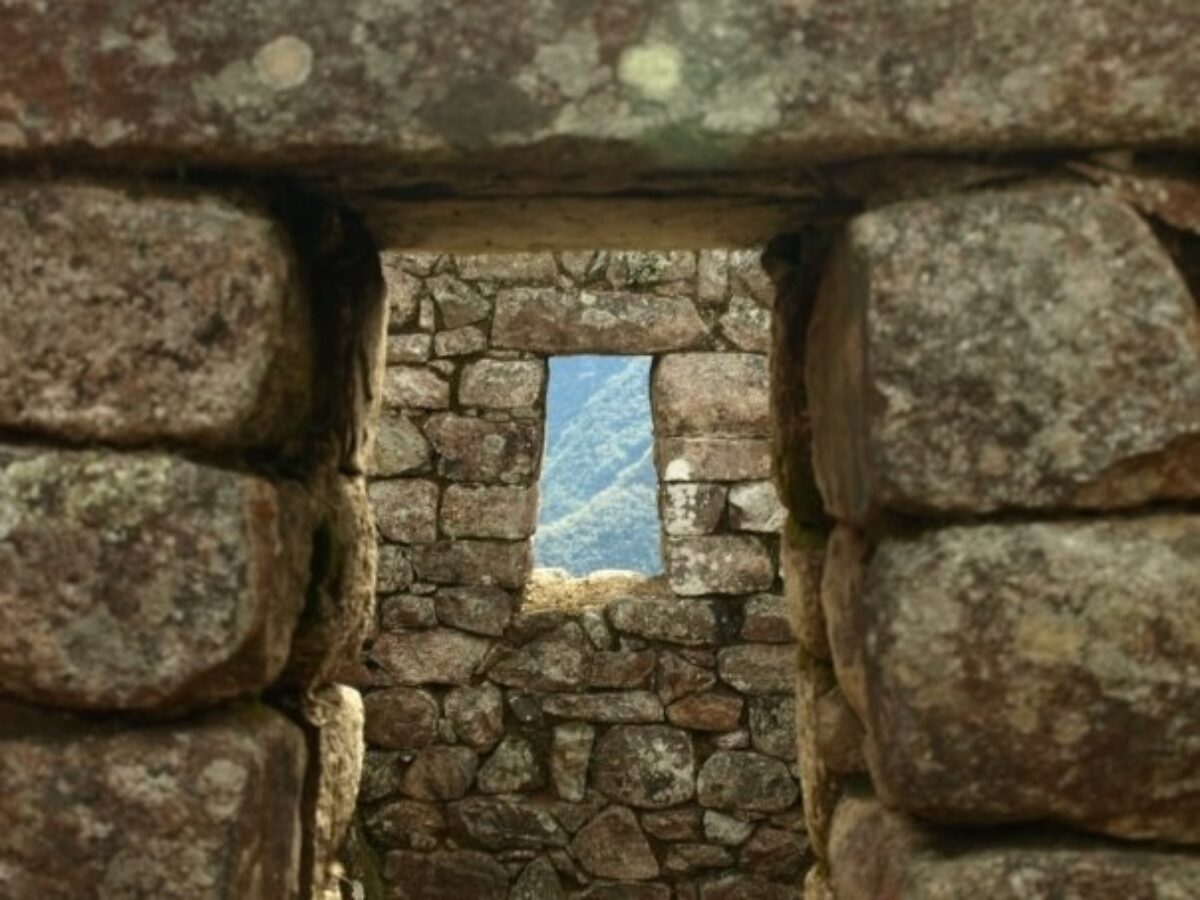
Intricate stonework at Machu Picchu
Visiting Machu Picchu
What to expect on the day
The first step from Aguas Calientes is the shuttle bus that takes you up a steep set of switchbacks to Machu Picchu entrance. They run constantly throughout the day but you could still be standing in line for up to half an hour. Your bus ticket will be marked as either up or down, without any timetable. It takes about 20 minutes to get up to the entrance to the archeological site, which is your last opportunity to use a bathroom.
The circuits around Machu Picchu are all one way. It is extremely difficult to leave your group, exit the ruins, go to the bathroom, get back inside the ruins and then rejoin your group again. Take water with you, because it can be very hot, but don’t drink more than you can hold for two hours.
You will need your passport along with your Machu Picchu ticket to get past the gate and begin your tour. There is often a big crush of people at the gate and you may be waiting in line up to fifteen minutes, depending on the time of day.
Machu Picchu circuits
In 2022 the authorities introduced a new system of five pre-defined circuits around the ruins, in an attempt to better control the flow of visitors and limit their impact on the ruins. You can see maps of all five new circuits on the official website.
Which circuit you choose (or are allocated to) depends on your visit duration, and whether or not you've booked any additional day hikes.
Circuit 1
This is the shortest and is designed to take two hours. It visits the upper terraces, which is where most people get their best photos. You can see a few of the important sites, but not the main temple area. This route is good for people who can’t walk long distances.
Circuit 2
Most people will want to do this circuit through the ruins, which takes three hours. It covers all of Circuit 1, plus the main temple area and all the way to the Sacred Rock at the foot of Huayna Picchu. From 7:00-10:00, Circuit 2 goes to the Intihuatana and from 10:00-1:00 it goes to the Temple of the Condor. This is the only circuit that goes to the temple area, called “Plaza de los Templos” on the map.
Circuit 3
This circuit is designed to take one and a half hours. It visits only the lower part of the ruins but it still covers several important sites. If you book the extra hike up Machu Picchu Mountain, you’ll do this circuit before your hike, which takes about two hours.
Circuit 4
This circuit covers all of the main sites in the lower part of the ruins but does not visit the main temple area. Between 10:00 and 1:00 it goes to the Temple of the Condor. This is the circuit you will take if you book the extra hike up either Huayna Picchu or Huchuy Picchu. Circuit 4 takes two and a half hours.
Circuit 5
This last circuit is for those who hike the Inca Trail or KM104 and walk to Machu Picchu from the Sun Gate (Inti Punku). It visits all the important places in the lower part of the ruins. Circuit 5 takes one and a half hours.
The Inca Bridge used to be unregulated but it is now included in the extras that you have to choose when you buy your Machu Picchu ticket. There is no extra cost for the Inca Bridge or for the new Huchuy Picchu hike, but you do need to pay attention to your time slot for the hike. If you chose the Inca Bridge then you will do circuit 1 or 2.
How to buy your tickets
The easiest way to get Machu Picchu tickets is to book with a travel agency or tour operator. They will take care of the Machu Picchu entrance tickets, extra hike tickets, train tickets and bus tickets.
If you are not using a travel agency, you can buy everything online. The English version of the ticketing website isn’t great, and may take some patience. One word of warning about the website is that the Quechua word “llaqta” is used on both the Spanish and English versions of the website. It means town and is used to describe the main area of the ruins, also called the Machu Picchu citadel.
As of 2023, there is only one office in Cusco where you can buy Machu Picchu tickets. It’s on Calle Garcilaso next to the Regional Historical Museum and the southwest corner of Plazoleta Regocijo.
Prices
Prices are in Peruvian Nuevo Soles (PEN), which uses the symbol S/ and is a volatile currency. Always check the current exchange rate when estimating costs in pounds or dollars.
The main Machu Picchu ticket is S/152 for adults, S/77 for students with a photo student ID card and S/70 for children under 18. If you choose to do an extra hike to the Inca Bridge or Huchuy Picchu, the price is the same.
Huayna Picchu and Machu Picchu Mountain cost S/200 for adults, S/125 for students with a photo student ID card and S/118 for children under 18.
Entrance times
All tickets are for a specific time slot - except for people who hike the Inca Trail or the trail from KM104. Consider what time of day you’d like to visit. Many people rush to get the 6am tickets because they want to see the sunrise over Machu Picchu. Keep in mind that the area is part of a cloud forest on the edge of the Amazon Rainforest: many mornings at Machu Picchu are cloudy and do not have a postcard perfect sunrise.
If you plan to travel during the high tourist season from May to September, it is best to buy your Machu Picchu tickets as soon as you have your plane tickets and plan your entire trip around the day you'll be at Machu Picchu.
The timing of your train tickets must be carefully coordinated with the entrance time for the archeological site. Keep in mind it takes at least an hour to get off the train, walk to the street where the buses depart, take the bus up to Machu Picchu, stand in line at the entrance and get to the ticket taker at the gate. If your ticket is for 6:00, your ticket is good until 6:59. If you arrive at 7:00, you might struggle to get in. Yet another reason to let a tour operator handle it for you!
Rules
Every year the list of rules and regulations for visitors to Machu Picchu gets longer. Take the time to review the current list on the government website. It includes things like no selfie sticks, tripods, or drones and no whistling, clapping or singing.
Pro tip
Wear long pants and bring insect repellent but not an aerosol repellent. All aerosols are banned from Machu Picchu per the rules above. There are no mosquitoes at Machu Picchu but there are tiny biting flies that will leave unprotected legs covered with welts. They stay low to the ground, so you’re unlikely to get bitten on your face, unless you lay down in the grass. If you must wear shorts, douse your legs in DEET accordingly.
Solo vs organised Machu Picchu tours
It’s perfectly possible to visit Machu Picchu independently, and many people do exactly that. Entrance tickets, trains and accommodation can all be booked online ahead of time, and certified guides can be arranged at the ruins’ entrance. (It’s technically possible to arrange tickets, transport and accommodation on the fly, but you’d be taking a big gamble with availability: it’s highly advisable to book it all in advance.)
Most visitors however visit Machu Picchu with the help of a tour operator organising at least some of their trip. There are several benefits to taking an organised tour, most importantly help with the complicated logistics: transport to the train station, meeting the right train, queuing to collect your entrance tickets, finding your accommodation, and making the shuttle bus to the ruins’ entrance. Plus, both Machu Picchu and train tickets are limited and scheduling them both correctly is a headache. Paying for someone to sort it all out ahead of time is a worthwhile investment.
Secondly, there is no overstating the importance of your guide while you tour the ruins themselves. The quality of the guide can make or break the experience, and good tour operators pride themselves on the quality of their guides. When booking, look carefully for how much emphasis is made on the quality and expertise of their guides. Comparing review sites is also useful.
If you decide to hire a guide after you arrive at Machu Picchu, you will have plenty to choose from. Take a few minutes and interview them about how long they have worked at Machu Picchu and what expertise they have. Many studied archeology in university, but not all. This is also a great way to gauge their language ability.
Finally, although the vast majority of visitors breeze through without a hitch, the region is prone to floods, landslides and occasional bouts of civil unrest, all of which can disrupt the best made plans. Having someone on the other end of a phone should something go wrong can be a welcome reassurance.
Dealing with altitude
The entire region is likely significantly higher than wherever you’ve travelled from, and altitude sickness can pose a real problem with headaches, nausea and general tiredness detracting from your overall experience. But at around 2,040 m (6,700 ft), Aguas Calientes is significantly lower than Cusco (3,399 m / 11,000 ft), as is Ollantaytambo in the Sacred Valley (2,800 m / 9,200 ft). For this reason look for itineraries that tour Cusco last, after Machu Picchu and the Sacred Valley: this is in reverse to the standard itinerary, but it means spending most time in Cusco, the highest point, once you’re fully acclimatised. Most Cusco tour operators are happy to put together a custom itinerary for your group.
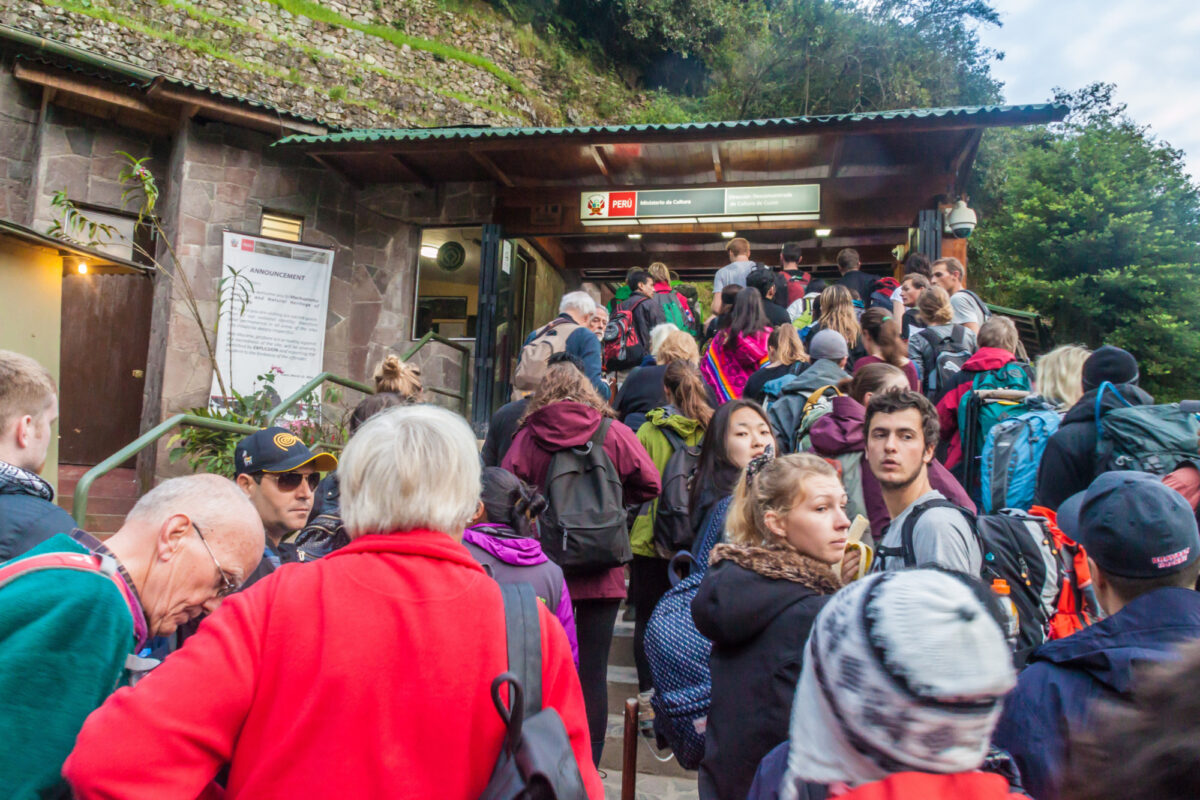
A typical morning at the entrance to Machu Picchu
Overtourism at Machu Picchu
Machu Picchu myth vs reality
Machu Picchu is one of the most visited archaeological sites in the world. In the peak summer months, more than 3,000 people visit the site each day, well over the maximum of 2,500 advised by UNESCO. "Overtourism" is a very real danger here — and not just to the detriment of its visitors’ experience, but also the site itself.
For example, the Inca Trail — the 26 mile trek from kilometre 82 to Machu Picchu — has seen a massive influx of hikers over the past few decades. In 1984, just 6,000 people walked the trail. By 2000, this number had grown to 84,000, leading to erosion along the path and mountains of rubbish, with plastic water bottles a particular problem.
Japanese scientists from the University of Kyoto caused further panic in 2001 when their research suggested that the slopes on the western side of Machu Picchu were slipping down the hill by one centimetre a month, prefacing a potentially catastrophic landslide for the site. Amongst their reasons for the movement was the number of tourists unsettling the site’s subsoil.
The authorities have made valiant efforts in cleaning up the industry and protecting the heritage sites, but there remains a tension between protecting archaeological sites and promoting tourism.
This is the juxtaposing challenge that lies at the heart of overtourism. Machu Picchu and the Inca Trail are historical sites well worth spending time and money on. For the Peruvian government and people, the Inca citadel is its most marketable venue and biggest cash cow. However, the more it encourages people to visit — and numbers are growing as travel becomes cheaper and easier — the more it harms the very site it needs.
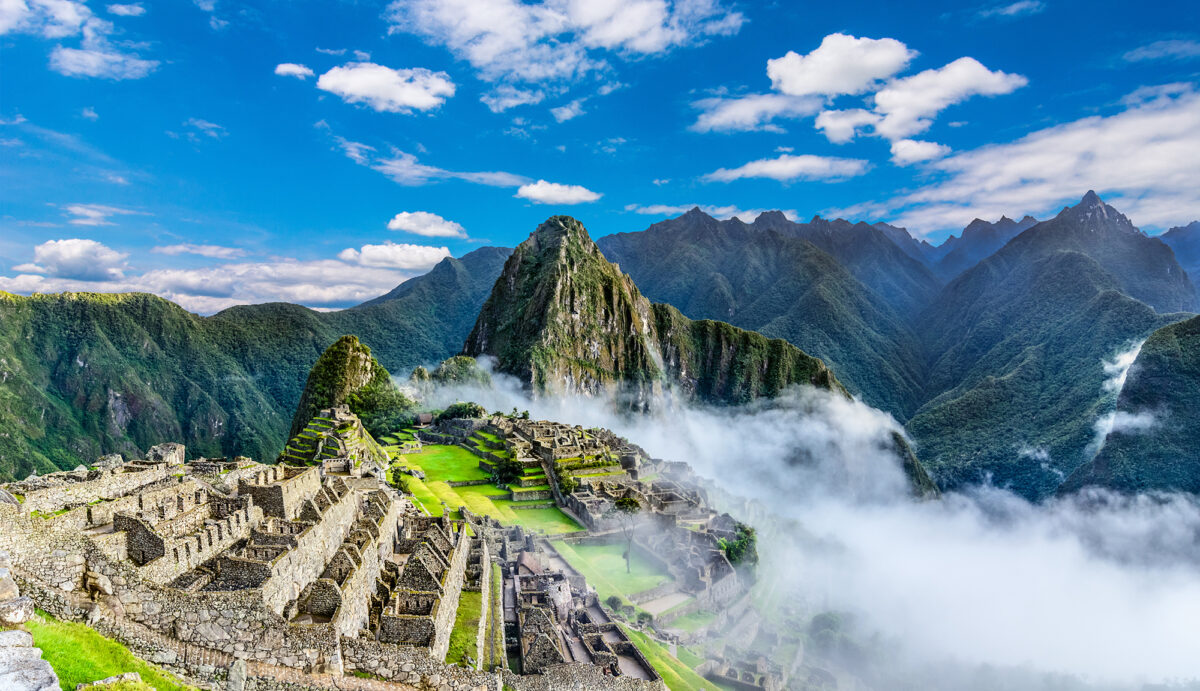
Good luck finding a view like this
The tourism industry – and, yes, tourists themselves – all play a role in this ethical jumble. Travel companies have made wild profits on the backs of Peru's indigenous heritage, often by marketing the myth of Machu Picchu while papering over the inconvenient realities. Brochures and websites are full of Photoshopped images of deserted ruins draped in wisps of cloud, when in fact the actual experience is nothing of the sort. Fascinating and worthwhile, yes. India Jones adventure of discovery, no.
So, come to Machu Picchu by all means, but do come aware of the realities and equipped to make good choices as a consumer and visitor to Peru. Try to stay longer, spread your money more locally, and save some time for some of Peru's other, criminally underrated historical sites.

